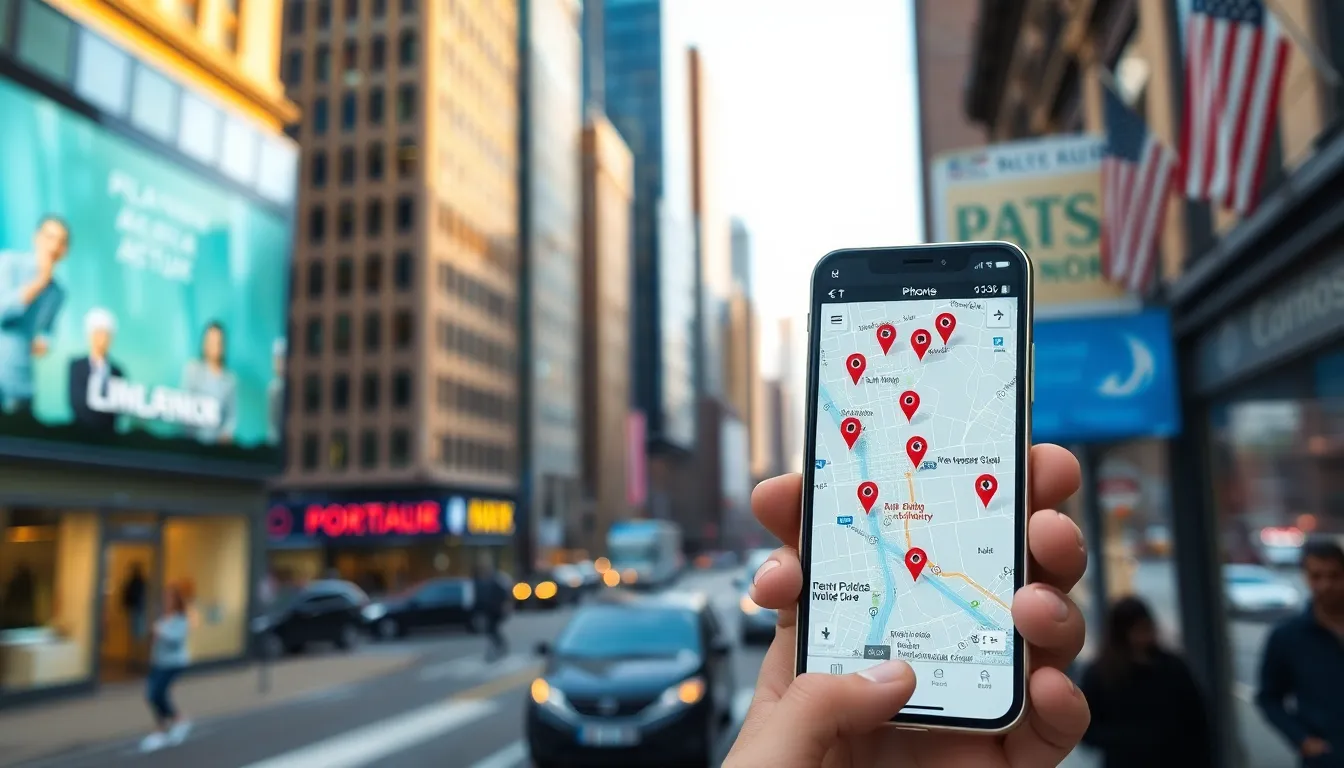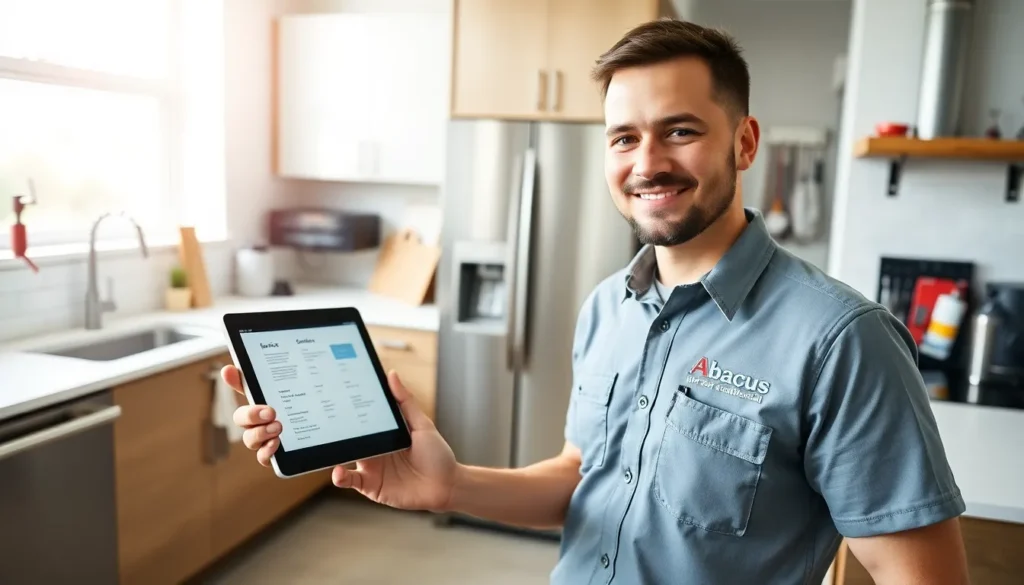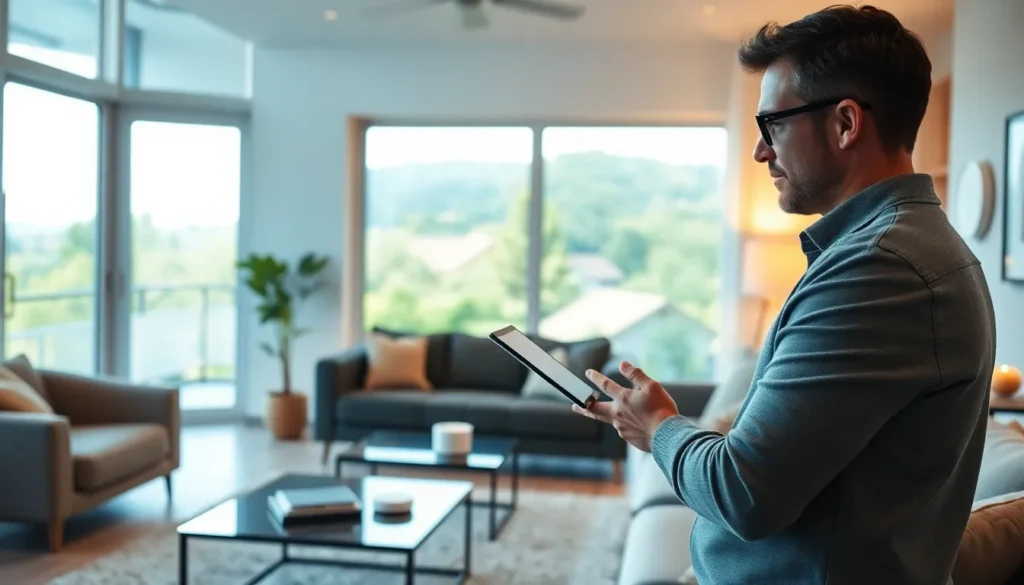In a world where smartphones are practically glued to our hands, sharing your location shouldn’t feel like a game of charades. Whether you’re trying to meet up with friends or just want to let someone know you’re safe, the question arises: can you share your location from an iPhone to an Android? Spoiler alert—it’s easier than finding a parking spot in a crowded lot!
Table of Contents
ToggleUnderstanding Location Sharing
Location sharing provides users the ability to share their real-time location with others. This functionality fosters communication and enhances safety in various scenarios.
What Is Location Sharing?
Location sharing refers to the process of transmitting a device’s geographical position to another user or group. This feature often relies on GPS technology and smartphone applications. Various platforms, such as messaging apps and social media, enable users to share their whereabouts seamlessly. Sharing can occur for specific periods or indefinitely, depending on user preferences. Users can access this feature on both iPhone and Android devices, fostering connectivity across different operating systems.
Importance of Location Sharing
Location sharing plays a critical role in enhancing safety and convenience. Friends and family can track each other’s locations during outings or travel. In emergency situations, sharing location helps responders reach individuals quickly. Additionally, shared locations facilitate meeting up with friends in crowded areas. Businesses increasingly utilize location sharing for customer engagement and services. Many applications offer location tracking, making it easier for users to stay connected and informed.
Compatibility Issues

Sharing location from iPhone to Android faces some compatibility challenges. These devices run different operating systems that can affect direct communication.
iPhone to Android Limitations
iPhones use iMessage for location sharing, limiting interaction with Android’s default messaging apps. Features like Apple’s Find My Friends may not function between the two platforms. Users can’t share locations via native apps since they lack cross-platform support. GPS data access could differ, causing delays or inaccuracies when sharing. Periodic updates from both Apple and Google may improve compatibility but won’t eliminate existing restrictions.
Third-Party Apps for Location Sharing
Utilizing third-party apps often enhances location sharing between iPhone and Android. Applications like Google Maps and WhatsApp enable easy sharing of real-time locations across different operating systems. Users can share their GPS coordinates regardless of the device. While these apps have their own privacy settings, they’re generally more reliable for cross-platform communication. Additionally, they often provide more features, like route sharing and estimated travel times.
Methods to Share Location
Sharing location between iPhone and Android devices involves straightforward methods that enhance connectivity. Two effective ways include using built-in features and utilizing third-party applications.
Using Built-In Features
iPhone users can share their location using Apple Maps. By tapping the share button and selecting a messaging app, they can send their location directly to Android users. Google Maps offers a similar function for Android devices; users can share their real-time location with iPhone users through their Google account or via messaging apps. Both approaches rely on GPS and ensure accurate transmission of the geographical position, enabling efficient coordination for meetings or safety alerts. However, the experience may vary based on the recipient’s device settings and permissions.
Utilizing Third-Party Applications
Using third-party applications expands the options for location sharing between iPhone and Android. Google Maps stands out as a versatile choice, allowing users from both platforms to send and receive location information seamlessly. WhatsApp also facilitates location sharing with added benefits such as sending messages alongside the location pin. Both apps operate independently from the operating system and provide reliable updates. This flexibility enhances communication, ensuring users stay connected regardless of their device. Options like these make sharing a location simple, safe, and efficient.
Steps for Sharing Location
Sharing location between iPhone and Android devices involves a few clear steps. The process may vary depending on the applications used.
Sharing via Google Maps
Google Maps offers a simple way to share location. First, open Google Maps on the device. Then, tap on the blue dot that indicates your current location. Next, select the “Share your location” option. Users can choose how long to share their location, whether it’s for a specific time or until they turn it off. After that, a list of contacts appears, allowing users to select whom to share with. If a contact is not listed, they can copy the link to share via text or other messaging apps. This method ensures both iPhone and Android users stay connected easily.
Sharing via Social Media Platforms
Social media platforms also facilitate location sharing. Open the app of choice, such as Facebook or Instagram, and create a new post. Location settings typically allow users to add their current location directly. After selecting the location, users can share the post with friends or followers. Check privacy settings before sharing, as they determine who can see the post. Sharing location via social media tends to be quick and allows for real-time updates, making it an engaging option for users wanting to inform their network. This method serves as both a means of connection and a way to highlight awareness of surroundings.
Privacy Considerations
Location sharing proves useful, but users must handle privacy settings cautiously. Both iPhone and Android devices, equipped with different privacy features, require users to manage these settings effectively. Location sharing permissions can dictate who sees shared data and for how long.
Managing Location Privacy Settings
Adjusting location privacy settings is crucial for users sharing their location. iPhone users can navigate to Settings, select Privacy, and then tap Location Services to control which apps have access. Similarly, Android users access settings through Location under the Privacy section, enabling or disabling app permissions individually. Regularly reviewing these settings ensures only trusted contacts receive location information, thus safeguarding personal privacy. Each platform offers features to customize visibility to specific friends or family members while also allowing users to disable location sharing completely when needed.
Risks of Sharing Location
Sharing one’s location carries inherent risks. Unauthorized access potential exists, where untrustworthy contacts could track a person. Accidental sharing, especially through social media platforms, can lead to safety concerns if information falls into the wrong hands. Additionally, users might expose sensitive information through shared locations, such as frequent visits to private places. Understanding these risks enables individuals to make informed choices about their location-sharing habits, enhancing personal safety and security. Practicing caution while sharing locations minimizes these vulnerabilities and increases overall user confidence.
Sharing location between iPhone and Android devices is straightforward and beneficial for enhancing communication and safety. By utilizing third-party apps like Google Maps and WhatsApp users can bypass compatibility issues and share their real-time position effortlessly.
It’s important for users to be mindful of privacy settings to ensure their location is only visible to trusted contacts. With the right tools and precautions in place sharing location can be a seamless experience that fosters connectivity across different platforms. Embracing these methods not only simplifies meet-ups but also boosts personal safety in various situations.









